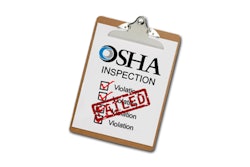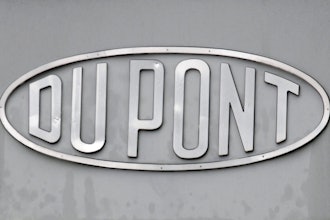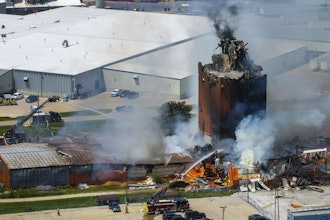Due to stringent safety regulations and increased customer demand for quality audits, providing product and lot traceability has become a critical requirement in the food and beverage industry. Regulations such as the Food Safety Modernization Act (FSMA), increased pressure from customers and an increasingly complex supply chain are pushing the industry toward a focus on preventative controls and streamlined audits. Meanwhile, consumers are demanding better traceability to show exactly where each product and ingredient came from and to effectively manage product recalls. Bill Leedale, Senior Advisor at IFS, explains how an integrated and proactive approach to quality management is critical for food and beverage manufacturers to better manage the supply chain.
Effective management of product recalls is high on the agenda for the food and beverage industry, as the ability to quickly view detailed tracing of affected lots and direct materials allows for a more targeted and less costly recall. But while good recall management and quality control is a step in the right direction, what food and beverage manufacturers really need is quality assurance.
Quality assurance differs from recall management and quality control in that it leverages analytical tools to prevent quality issues from occurring in the first place. Enterprise resource planning (ERP) and quality management are necessary to achieve this, but the best approach for food and beverage companies goes way beyond just being able to quickly perform lot-level traceability.
Here are four key areas food and beverage manufacturers need to get a handle on to realize this proactive approach to quality assurance:
1. Non-conformance needs to be easy to launch, create and resolve
When most people think of quality management, they usually tend to focus on production management processes. For certain, in food manufacturing, it’s necessary to use quality control plans to ensure steps, such as temperature readings or vessel hygiene, are always followed. However, quality can also be impacted by processes that fall outside of the plant floor, including receiving products that have spent too much time in unrefrigerated areas, a lack of employee safety training or maintenance procedures that involve the sanitation of transportation equipment.
When a company identifies a quality management problem, it should be able to quickly launch a non-conformance report (NCR) to investigate that process. In a company’s enterprise software system, NCRs need to be able to launch against any business process in the system and tackle the broadest possible range of quality assurance issues. Quality assurance encompasses all processes and teams and isn’t just about your product or the materials you use — which is why NCRs should be easy to launch, create and resolve.
2. The cost of quality should be all part of the ERP project management
An important part of quality and food safety initiatives is the resource planning and costing for the initiatives themselves. When meeting order commitments, it can be difficult to focus on the cost of quality and improvement projects. While there are standalone project management tools that a company could use for quality projects, these are fragmented and would struggle to export this data, including cost and human resources information, back into the software system.
But an ERP suite with project management and quality management makes the cost of quality much easier to manage. This means that, with a connected ERP suite, if there is a material from a supplier that has failed a quality test, that material can be scrapped, and the resulting cost assigned to a project — as can the time for any auditing, inspection or additional procurement activities that are part of the project.
3. Resource documents should be at employee’s fingertips
Embedded document management within an ERP system provides a means of attaching any document, note, or text-based analytical result alongside the business process being executed. For example, plant floor operators at a batch process step can see any safety mandates which must be followed. Likewise, embedded document management provides a way to link technician notes or other documents that give insight on servicing of assets, so that the next technician who works on the equipment can view all the relevant information in a single source.
The fact that the document management system is embedded means there is no special programming needed to link documents to business objects in the ERP system. It is also possible to place certain document types within roles-based portals — a plant manager can see all NCRs related to batch/process manufacturing, while a procurement manager can see all NCRs involving materials.
4. The right UX means the right information, to the right person, at the right time
In the rush to hit delivery windows, it can be difficult to focus on long-term quality improvement without having role-based user interfaces (UI). Any ERP system should have the UI and dashboard tools that make it easy for people in specific roles to navigate the system, see the metrics they need, and react to alerts. In the food & beverage sector, much of this information will involve critical quality and food safety information.
Enterprise systems, and the employees using them, need multiple mechanisms for role-based UIs as well as preconfigured screens for the different roles in food and beverage manufacturing. With this, quality managers can instantly get the information they need to prevent, not react to, product recalls — including statistical process control (SPC) charts, quality reports and summary information regarding audits, NCRs, or corrective action and preventive action (CAPA) processes. It can also include views from project management on the costs involved in current quality improvement initiatives or recent recall activities.
Food for thought
In food and beverage manufacturing, being able to meet customer commitments while maintaining tight supply chain control and improving long-term quality of service are top priorities. Instead of scrambling to pinpoint affected lots or materials by gathering data from fragmented systems, an integrated approach to quality assurance allows for traceability with just a few clicks and queries. With this approach, a sudden supplier audit or product recall can be easily managed within in an hour or two, rather than days or weeks of sifting through data or paper records.
Of course, it’s essential to have software which enables recall management and quality control mechanisms, but to get to the next level, it’s about taking a proactive approach to risks and quality assurance.























